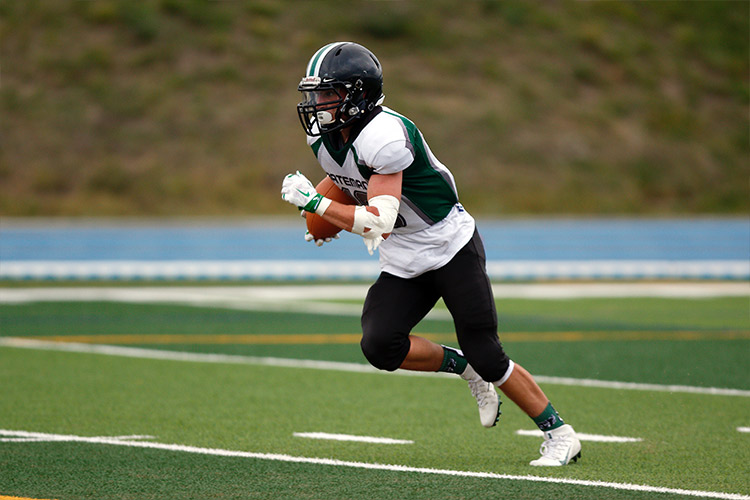Inertial Sensors: Capturing player movement
Although distance and velocity measures are useful in player tracking technology, to get a real in-depth analysis of movement, practitioners often turn to inertial sensors. In the sporting context, inertial sensors are made up of an accelerometer to measure force and acceleration, a gyroscope to give an indication of rotation, and a magnetometer to measure body orientation. These sensors collect data across three axes and capture athlete movement in minute detail. The use of inertial sensors is often combined with algorithms to make data meaningful, useable and specific to sporting actions. These algorithms are refined with machine learning so movements can be ‘learned’ by the system and differentiate between a jump to the right or jump to the left, for example. Other uses include measuring bowling in cricket, jumping in basketball, or tackling in rugby.

Sensors in action
One of the most popular uses of inertial sensors is in trying to quantify athlete readiness and fatigue in the field. Fixed, submaximal protocols are often included in athlete warm up while they wear sensors. Data collected via sensors is incredibly sensitive and is able to detect changes in force or direction of force which may change with injury or fatigue. Each athlete has an individual movement signature so coaches and sports scientists are able to compare an athlete to his/her ‘normal’ self. However, one common misconception is that the data collected via inertial sensors worn in between the scapula (predominantly in GPS devices) accurately reflects what is going on at the extremities such as the ankle and foot. A solution to this is to wear the inertial sensors towards that extremity which will give a better indication of the interaction between the ground and the body.
Jumping into the action
A common problem in jumping sports has been the collection of data around how many jumps athletes actually perform. Traditionally, this has resulted in coaches manually counting jumps, which is extremely time intensive. Recent research now suggests that sensors have the capabilities to automatically and reliably count the number of jumps an athlete performs. However, caution must be exercised when interpreting jump height data from inertial sensors. This has been found to be less reliable in countermovement jumps, squat jumps, and single leg jumps.
As data processing, algorithms and data management improves, the use of inertial sensors will become more popular in sports performance, especially as hardware shrinks smaller and smaller. This may even result in inertial sensors embedded into clothing which will give even further flexibility in what data can be collected on athletes.
Turning theory into practice
Lots of data can be generated from inertial sensors. But how do coaches, sports scientists and medical professionals use this data in practice? Listed below are a number of resources from elite practitioners who explain how they go about translating data into action.
- Using step intensity and tibial shock to guide recovery from navicular fracture. A case study with Holly Lawrence.
- Lower limb monitoring for injury rehab. A case study with the University of Memphis.
- Using inertial sensors to improve the return to play process. A case study with Loughborough University.
- Wearable Technology in Tennis Unlocks New Potential in Performance and Rehabilitation

